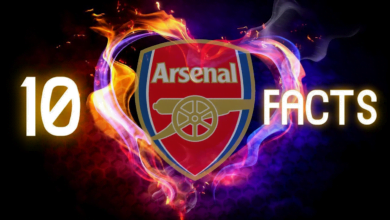How to Fill Out a March Madness Bracket: Tips for Predicting Winners

How to Fill Out a March Madness Bracket: Tips for Predicting Winners, March Madness, the annual NCAA Division I Men’s Basketball Tournament, captivates sports fans around the globe. Filling out a March Madness bracket has become a popular tradition, as enthusiasts try to predict the winners of each game and compete with friends, colleagues, and even in online tournaments. While it may seem like a daunting task, with the right approach and some tips, you can increase your chances of making accurate predictions. In this article, we will guide you through the process of filling out a March Madness bracket and provide valuable tips for predicting winners.
How to Fill Out a March Madness Bracket: Tips for Predicting Winners
Step 1: Familiarize Yourself with the Teams
To make informed predictions, it’s crucial to familiarize yourself with the participating teams. Research each team’s performance during the regular season, their key players, coaching strategies, and any significant injuries. Pay attention to their strengths and weaknesses, as well as their historical performance in previous tournaments.
Step 2: Analyze Statistics and Metrics
Step 3: Consider Matchup Dynamics
When filling out your bracket, consider the dynamics of each matchup. Take into account factors such as playing styles, team chemistry, coaching strategies, and how the teams’ strengths and weaknesses align. Analyze how individual matchups on the court can influence the outcome of the game. For example, a team with dominant inside players may have an advantage against a team with weaker interior defense.
Step 4: Upsets and Cinderella Stories
Upsets and Cinderella stories are an integral part of the March Madness tournament. In the context of March Madness, an upset refers to a situation where a lower-seeded or less-favored team defeats a higher-seeded or more highly-regarded team. It is a surprise victory that deviates from the expected outcome based on the teams’ rankings and perceived strengths.
Cinderella stories, on the other hand, refer to the inspiring runs of underdog teams that exceed expectations and capture the hearts of fans. These teams often come from smaller conferences or have lower seedings and face significant challenges against more established and favored opponents. Cinderella stories capture the imagination of fans because they embody the spirit of underdogs overcoming the odds and achieving success in the tournament.
When it comes to filling out a March Madness bracket, analyzing statistics and metrics is a crucial step in making informed predictions. This process involves evaluating various numerical data and performance indicators related to the participating teams. By examining these statistics, you can gain valuable insights into a team’s overall performance and assess their strengths and weaknesses. Here are some key statistics and metrics to consider:
- Scoring Averages: Analyze the average number of points a team scores per game. This metric helps gauge a team’s offensive prowess and their ability to put points on the board.
- Field Goal Percentages: Evaluate a team’s shooting efficiency by looking at their field goal percentage. This metric indicates the team’s accuracy in converting their field goal attempts into successful baskets.
- Three-Point Shooting Accuracy: Consider the team’s three-point shooting accuracy, which reflects their ability to score from beyond the arc. Teams with strong three-point shooting percentages can be effective at creating scoring opportunities and stretching the defense.
- Rebounding Abilities: Assess a team’s rebounding performance, both on the offensive and defensive ends. Strong rebounding teams can control the boards, secure second-chance opportunities, and limit opponents’ scoring chances.
- Turnovers: Evaluate the number of turnovers committed by a team. Teams with low turnover rates demonstrate better ball control and decision-making, minimizing wasted possessions and scoring opportunities for the opposition.
- Defensive Effectiveness: Examine defensive metrics such as points allowed per game, opponent field goal percentage, and blocked shots. A team’s defensive capabilities can play a significant role in disrupting opponents’ offenses and securing victories.
By analyzing these statistics and metrics, you can compare teams’ performance in different areas of the game. Look for teams that excel in areas that are crucial for success in the tournament, such as efficient scoring, strong defensive presence, and disciplined ball handling. However, it’s important to remember that statistics are not the sole determinants of success. They provide a valuable starting point for analysis, but other factors like team chemistry, coaching strategies, and matchup dynamics should also be considered for a comprehensive evaluation.
Upsets and Cinderella stories are an integral part of what makes March Madness so exciting and unpredictable. The single-elimination format of the tournament allows for these surprises to occur, as even the most dominant teams are susceptible to a bad game or a stellar performance from an underdog. These unexpected outcomes create memorable moments and dramatic narratives that add to the allure and drama of the tournament.
As a March Madness bracket predictor, it is important to consider the potential for upsets and Cinderella stories when making your predictions. While it is challenging to accurately predict these surprises, looking for teams that possess qualities like resilience, strong defense, or exceptional shooting abilities can increase the chances of identifying potential upsets. Keeping an eye on lower-seeded teams that have shown consistent performance or have had recent success can also help in recognizing potential Cinderella stories.
Ultimately, upsets and Cinderella stories are part of the magic of March Madness. They remind us that anything can happen in sports and that the tournament is filled with thrilling moments of triumph and surprise. Embracing the unpredictability and excitement of these underdog stories adds an extra layer of enjoyment to the overall March Madness experience.

Step 5: Trust Your Gut and Have Fun
Trust Your Gut and Have Fun” is a phrase used in the context of filling out a March Madness bracket. It emphasizes the importance of following your instincts and enjoying the process of making predictions, even in the face of uncertainty and unpredictability.
When it comes to March Madness, no prediction method is foolproof. Upsets and surprising outcomes are part of the tournament’s charm and excitement. While analyzing statistics, team performance, and matchups can provide valuable insights, there are often unexpected turns that can’t be accurately predicted.
Trusting your gut means listening to your intuition or personal feelings when making your bracket picks. Sometimes, you may have a hunch about a particular team or matchup that defies statistical analysis. While it’s essential to consider relevant factors, it’s also important to acknowledge that there’s an element of chance and unpredictability in the tournament. Trusting your gut allows you to embrace your own instincts and preferences while enjoying the excitement of March Madness.
Additionally, having fun is a crucial aspect of filling out a bracket. March Madness is a celebration of the passion for basketball and the joy of the tournament. It’s an opportunity to engage with friends, colleagues, and fellow fans in friendly competition or bracket challenges. While accuracy in predictions is desirable, it’s also important to remember that the tournament is ultimately about enjoying the games and the shared experience.
By trusting your gut and having fun, you can approach filling out a March Madness bracket with a balanced perspective. It allows you to appreciate the unpredictable nature of the tournament while also embracing the excitement and anticipation of the games.
Conclusion
Filling out a March Madness bracket is both an art and a science. While there is no foolproof method for predicting winners with absolute certainty, following these tips can help you make more informed decisions. By familiarizing yourself with the teams, analyzing statistics, considering matchup dynamics, and being open to surprises, you can enhance your chances of success. Remember, March Madness is about celebrating the passion for basketball and the joy of the tournament, so embrace the experience and enjoy the games.
FAQs
Q: What is the March Madness bracket? A: The March Madness bracket is a tournament bracket used to predict the winners of each game in the NCAA Division I Men’s Basketball Tournament.
Q: How do I fill out a March Madness bracket? A: To fill out a March Madness bracket, you predict the winners of each game in the tournament by considering factors such as team performance, statistics, matchups, and potential upsets.
Q: Is there a strategy for filling out a March Madness bracket? A: While there is no foolproof strategy, researching teams, analyzing statistics, considering matchup dynamics, and being open to surprises can improve your chances of making accurate predictions.
Q: Should I rely on statistics or intuition when filling out a bracket? A: It’s best to strike a balance between using statistics and trusting your intuition. Statistics provide valuable insights, but your intuition or personal preferences can sometimes influence your picks.
Q: Can I join March Madness bracket challenges or pools? A: Yes, many workplaces, friends, and online platforms organize March Madness bracket challenges or pools. Participating can add a fun competitive element to the tournament.
Q: Is it possible to predict all the winners in a March Madness bracket? A: Predicting all the winners accurately is highly unlikely due to the unpredictability of the tournament. Upsets and surprises are common, adding to the excitement of March Madness.
With these tips and a bit of luck, you’ll be well-equipped to fill out a March Madness bracket and enjoy the thrilling journey of the tournament. May the best bracket win!





